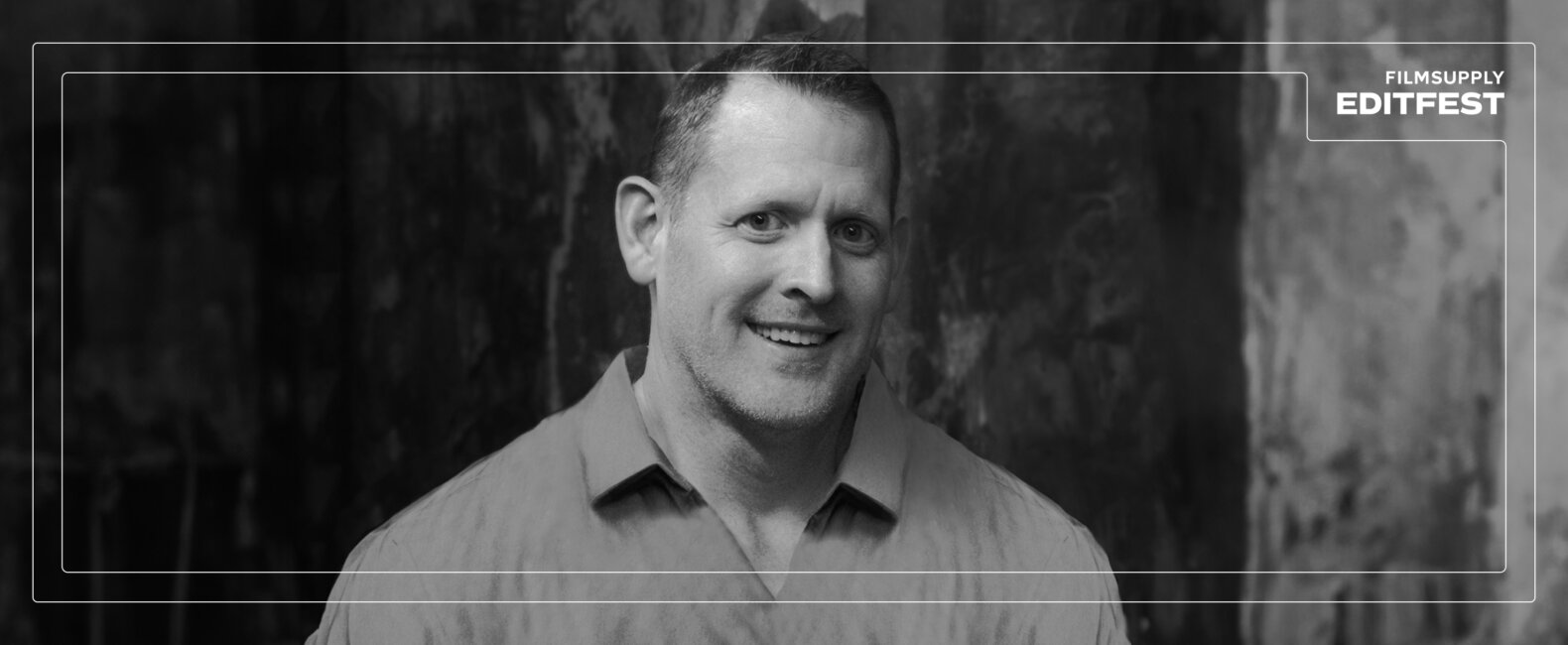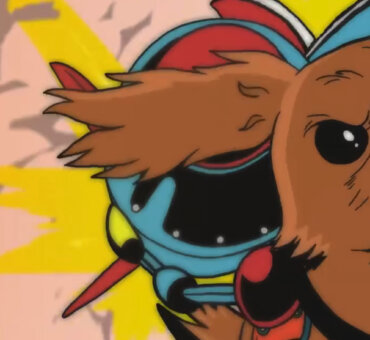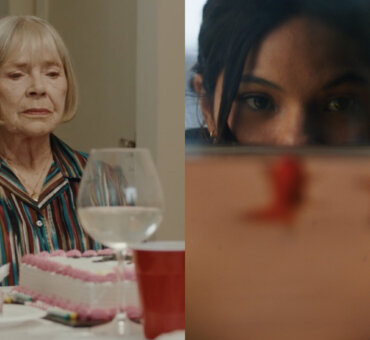In the world of commercial editing, where precision, creativity, and technical skill come together, Chris Gipson has made his mark. As a founding partner and senior editor at Republic, Gipson has contributed to visually engaging and narratively strong advertisements for brands like Budweiser, Clorox, Nissan and Tostitos, helping to connect with audiences globally. And this year, he’ll be lending his expert eye to our Filmsupply Editfest judging panel. You can find further information about Filmsupply Editfest here.
In this exclusive interview, we explore Gipson’s early passion for filmmaking, his transition to commercial editing, and insights from a decade of shaping the industry. From his memorable projects to his strategies for fostering client relationships, Gipson offers a unique perspective on the craft that has defined his career.
Filmsupply: What initially sparked your interest in editing, and how did it influence your transition to commercial editing?
Chris Gipson: I grew up in West Los Angeles and always loved going to the movies as a kid. So when my parents bought a VHS camera when I was in the 7th grade, my brothers and I would come up with various ideas for small skits and music videos and would then film them in our downstairs basement. The VHS camera and player/record dock were fairly advanced for its time, so I could add music or SFX later and re-shoot certain scenes, keeping the original audio. In the beginning, I would shoot the scenes in order. If we messed up, we would rewind the videotape to the correct place (roughly) and reshoot. At one point, we got a 2nd VHS deck, which would make things a little easier so that all of my edits did not need to be “live.” Although shooting and “production” were fun, I gravitated to the editing process, which I enjoyed. It even got to a point where I would shoot random things just to get footage so that I could edit. I discovered that editing is both a technical and creative endeavor. There can be both a messiness to the process and a structure to it, and I embrace all of it.
With regards to getting into commercials, I honestly sort of stumbled into it. While shooting and editing those basement skits and music videos, I thought I would end up in the feature world. It is not that I did not want to edit TV commercials, but the idea just did not cross my mind, I was very naive. During my job hunt, the month after graduation from UCSB, I discovered the post-production community in the broadcast TV commercial world. I purchased a “Hollywood Blue Book,” a directory of all the production companies and post-production houses in Southern California. I then sent every post house listed in the directory a resume in the mail to 110 or so different places. I followed up a week or so later in person with another resume. During this in-person follow-up, I landed a gig at Red Car Hollywood as a freelance runner/PA, which in turn morphed into a staff position.
What inspired you to start Republic?
In 2013, after moving from LA and working in Red Car’s Dallas office for almost a decade, two of my Dallas associates, Carrie Callaway and Keith James, and I decided we wanted to partner in our shop. Although Red Car had always had a culture of empowering creatives and company leaders at the local studio level, we no longer wanted to be beholden to an out-of-state owner and corporate office halfway across the country. Carrie, Keith, and I wanted to be able to run the business our way. We tried to keep what was best about Red Car but be able to change what we wanted. We wanted our successes, as well as our failures, to be our own.
Although we were prepared to leave Red Car and build a post-house from scratch, we decided first to approach Red Car’s owner, Larry Bridges, and see if he would be willing to sell to us. After negotiating, we finally reached a deal, bought the Red Car Dallas office, and rebranded as Republic. I still have a lot of admiration for Larry and will always be grateful to him and Red Car for providing me with such a solid foundation. These last ten years have been quite an adventure as an editor and partner at Republic, and I am looking forward to what the next ten years have in store.
What are some of the most memorable projects you’ve worked on?
Over the years, I‘ve worked on some really fun spots with some great people for some great brands. One that comes to mind was at the beginning of my career when I was still working in Red Car’s Santa Monica office. It was a spec spot for Budweiser (boards out of DDB Chicago) that I was cutting for Jordan Scott, Ridley Scott’s daughter.
It was a simple premise. Three friends sit ringside, enjoying a fight night when one of the boxing contestants knocks the other out of the ring with a powerful left hook. The boxer who flies out of the ring lands on the three friends, causing the middle friend, Sheldon, to spill his Budweiser beer. This enrages Sheldon, now with an empty Budweiser beer cup, so much that he takes the mouthpiece out of the knocked-out boxer’s mouth, puts it in his mouth, and jumps into the ring to avenge his lost beer only to take on the seemingly victorious and now surprised lone boxer. The spot had a simple idea, some tension, a little drama, and some humor, and was just a lot of fun to work on. Although the commercial never made it to broadcast, it did get a lot of online attention, and I even had the pleasure of having the great Ridley Scott sit in on one of the edit sessions (no pressure).
Another spot that comes to mind is from this past spring when I had the pleasure of working with the team at D3, the internal creative agency at PepsiCo, on a pair of spots for Tostitos tortilla chips. These spots lean heavily into the style and familiar cliches of American truck and tool ads but with a twist. Of the two spots, my favorite is “Tool.” This spot is a montage of craftsmen building furniture and cabinets in a dramatically lit workshop, blowing sawdust and flying metal sparks while featuring dishes made with Tostitos tortilla chips. The absurd “over-the-top” juxtaposition of imagery, paired with the pulsing drum beat and driving chords of the electric guitar in the music track, creates humor, making it hard not to smile. This campaign was a lot of fun to work on, and the team at D3 was a pleasure to partner with.
Is there a part of the editing process you love the most?
For any project, I love seeing the footage for the first time, going through it, and pulling my selects. I pull all the hero takes, all circled takes from the director, writer, art director, and other creatives, but what I enjoy is discovering those little moments in the film that have not been called out. These moments might have been unplanned, or where something unexpected happens. Many times, these pieces don’t fit into the spot that was boarded, but sometimes, when used in the edit, they can push the cut to a new level, adding a dimension to the cut, enhancing the narrative, or even taking the narrative in a new direction that even works better than what was originally planned. Aside from pulling my selects, I also really enjoy getting into the edit after I have my first rough assembly put together. I enjoy this re-editing of my first cut, playing with alternate takes, finessing the edit points, and playing with structure; this is where a lot of magic happens.
What are your key strategies for developing and sustaining strong client relationships?
As an editor at Republic, I am hired to provide or execute a creative edit and oversee the technical finish of that edit, with the end product being a finished commercial spot. To do this effectively, I need to have a certain level of trust with a client. One way to help build that trust is to not just deliver what is expected but try to over-deliver. Give them what is expected and more, and always try to add to a project. One way I do this is with my initial presentation to the client. I not only try to show a first cut of what was boarded (the boarded cut), but I also try to show at least one alternate cut, a cut that may be a bit different than what was planned.
It is in these alt cuts that a stronger narrative is often found, a different way of telling the story or delivering the message that is just as powerful and sometimes even more powerful than the original boards. Sometimes, I have luck persuading my clients to take the alternate route, and sometimes I don’t. The important thing is that I show them these alternate routes. Over time, this builds trust with the client, and the client starts to see you not just as a vendor or operator but as a creative partner.
How do you manage client expectations while pushing the creative boundaries?
Whenever I get an editorial project, during my first presentation to the concepting creative team, I try to show at least two spots. The first spot is the boarded spot or something as close to the boarded spot as I can. The second spot is an alt cut, which is my interpretation of the boards with a bit of a twist. This is where I try to push the creative boundaries of the original boards. Sometimes, this second version is slightly different than the first; sometimes, it is dramatically different and takes the spot in a direction that the concepting creatives never thought about but works just as well as the original idea, sometimes better. As far as managing client expectations? That can sometimes be difficult. A creative team can come in with great boards, boards that work great on paper in a static form, but once shot, a moving image on a screen, no matter how well executed, falls flat. This does not happen often, but when it does, as an editor, you need to dig deep and figure out a way to give your client the narrative or message they need with the footage you have.
On the other hand, sometimes the boards an editor gets are okay. Still, the director’s execution is so good, and your interpretation of the footage as an editor is so spot on that the final product is much better than anyone had expected. Take that as a win. In short, a good rule of thumb is not to “over” promise. A great editor can always add to a good script and a good director’s execution of a board and bring it up a notch or two. If you, as an editor, by chance, get a weaker script that was poorly shot (bad coverage, composition, etc.), good luck. You probably won’t be able to deliver what the client had boarded convincingly. This is more likely to happen earlier in your career when working with less experienced creatives and directors. Still, when this does happen, as a creative editor, you need to dig deep and maybe even re-concept the boards during the editing process. Even with more experienced teams, I have edited jobs where I have suggested VO changes, sometimes even rewriting parts of the script myself. This is always difficult but can be very rewarding when you find a successful solution for your client. Ultimately, as a creative editor, you are not just a storyteller but a problem solver and solution finder.
What advice would you give aspiring editors working their way up the ranks?
Start cutting. Home movies, music videos, spec spots, it does not matter, just start cutting (maybe even submit a piece for Filmsupply’s Editfest?) Also, pay much attention and put time into your edit’s audio. The music, SFX, and dialog play crucial supporting roles in the visuals. Too often, I have seen a young editor put all their attention into the picture part of an edit while neglecting the audio. Remember, bad and/or sloppy audio can kill an edit. Also, when you go through your footage for the first time and pull selects, call out any problems to the production company immediately: bad audio, missing takes, etc. You may need to contact your client directly if you see any major continuity issues. In short, you want to call out any problems right away (and have solutions.) Some are simple oversights and can be resolved easily; some will take more time, but the more time you have to deal with these unexpected issues, the better.
What’s next for Republic?
So much has changed in the industry over the last several years. Ten years ago, when my partners and I bought out Red Car Dallas and rebranded as Republic, we only did traditional broadcast commercial post-production. Our client base consisted almost exclusively of advertising agencies. Today, Republic has three fully developed studios—production, editorial, and design—capable of tackling various projects for both advertising agencies and corporate clients. Whether offering one specific step in the production or post-production process or a whole turnkey solution, our directors, editors, and designers are driven to elevate any project that comes through our doors. A key factor in this is to continually provide our artists with the latest training, tools, and other resources to help them excel in their jobs and push the creative boundaries of their crafts forward. Whether it be a motion-control robotic arm we purchased in partnership with one of our studio directors or getting our artists training in the latest generative AI workflows, we are always scanning the horizon to see what is coming next. I don’t know what the future holds for Republic exactly. Still, I do know we will continue to try and find opportunities where we can leverage and increase the skillsets of our artists with emerging technologies, which in turn will help bring better value and better creative to our client partners.
Why do you recommend Filmsupply as a resource for editors, agencies, and post houses?
If you are a post-house or agency creative that uses stock footage for your projects and you have not visited the Filmsupply website recently, I recommend that you check it out. Filmsupply has a fairly extensive library that is added to regularly, and they rep some talented filmmakers from some top production companies. From action shots to landscapes to timelapse, to lifestyle, to something more modern and cinematic, to a piece with a vintage handheld 8mm feeling, Filmsupply probably has what you are looking for.






